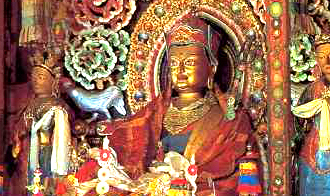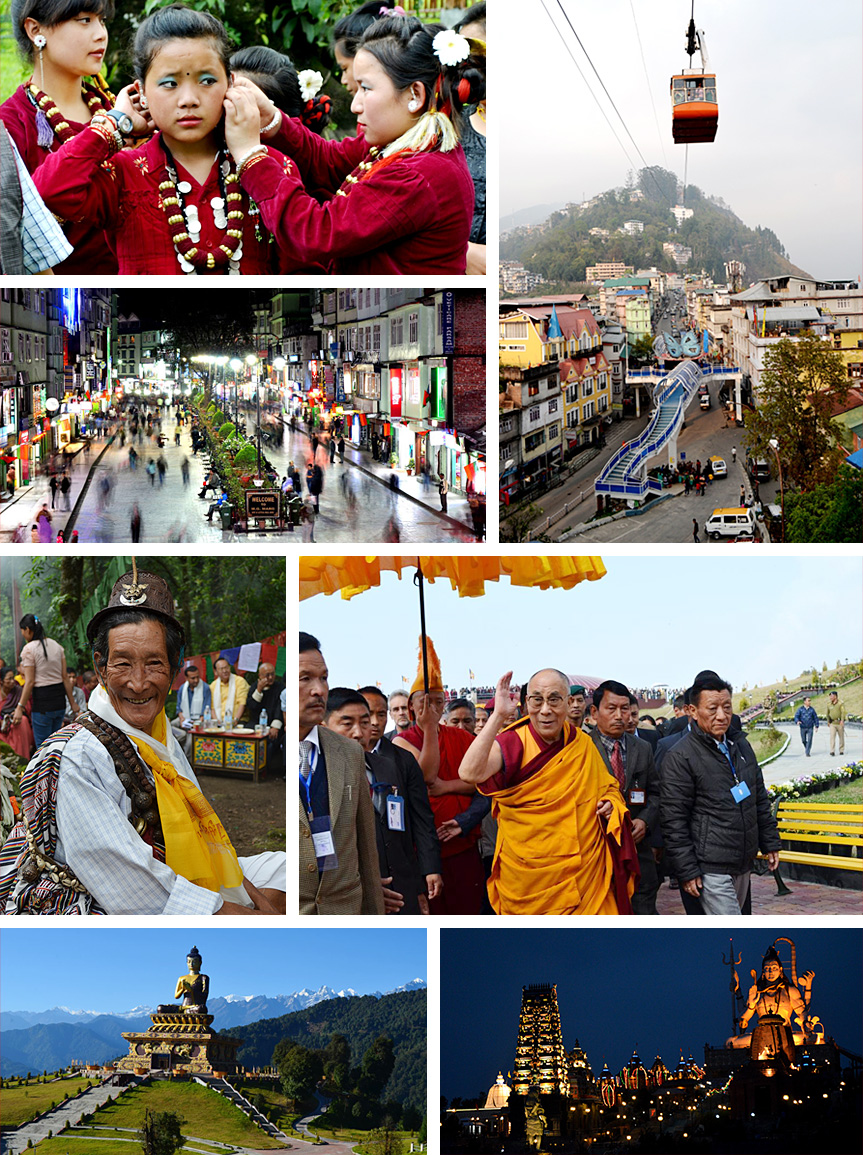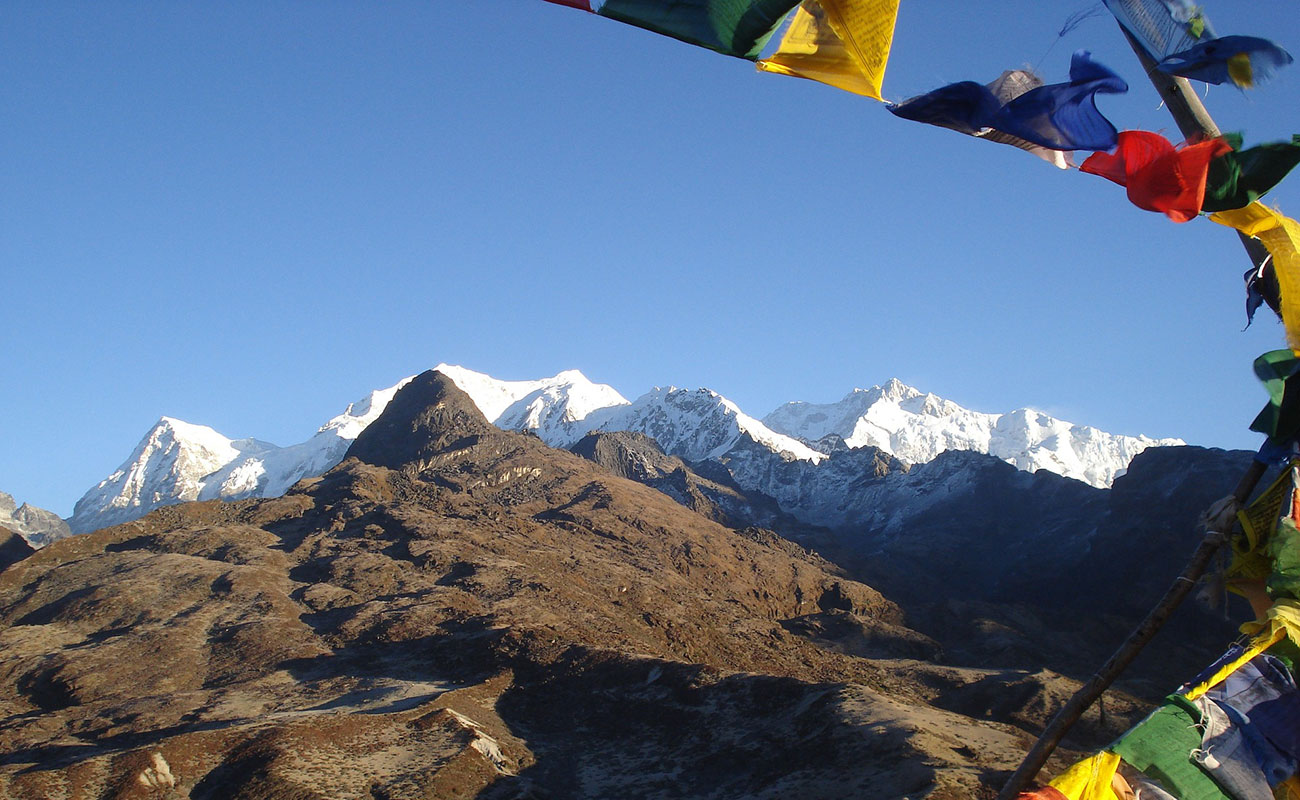
Sikkim is home to almost 200 monasteries or Gompas belonging to the Nyingma and Kagyu sect. Some monasteries like the Dubdi monastery in west Sikkim is considered the oldest monastery having been built in 1705. It is also home to some exotic orchids. It is said Sikkim has more than 6000 species of orchids.
A former royal kingdom, Sikkim has had a turbulent past owing to incessant raids and annexation threats from nearby kingdoms. Sikkim’s Coronation Book describes Guru Tashi (descendants of the Mi-nyak House of Kham in Eastern Tibetas) as the first ruler of Sikkim. Yet, it was not before 1642 AD, when Sikkim got its first Chogyal (king) Phuntsog Namgyal (the fifth generation descendant of the Mi-nyak house), who consolidated the fragmented territories. This event was preordained by the Buddhist sage Rinpoche, who had come to the region to spread Buddhism.
Over the next centuries the kingdom was attacked several times by Nepali, Bhutanese and Chinese raiders – and twelve generations of Chogyals ruled the region for over 300 years. In 1890 Sikkim became a British protectorate, owing to constant threats from Nepal, and later came under Indian suzerainty after 1947. With growing unpopularity of the Chogyals, the kingdom witnessed a tumultuous period which finally resulted in the 1975 referendum of Sikkim to join the Indian union.
 Photos: Shekhar Khawas
Photos: Shekhar Khawas
Sikkim has experienced very diverse cultural influences – and today the land is inhabited by a varied mix of Bhutias, Nepalese, Lepchas, Gurungs, Sherpas, Limbus and several other immigrant communities like Biharis, Bengalis and Marwaris. Though largely followers of Buddhism, a number of people have adopted Christianity and Islam too. In Sikkim we can see a prevalence of Buddhist festivals like Drupka and Bhumchu. Also celebrated with much fervour is the Tibetan New Year, called Losar and Nepali festivals like Tihar and Bhimsen pujas.
A unique concept, as part of the state’s plan to retain and promote its diverse ethnic heritage, is the village home-stays – which give tourists an opportunity to savour their way of life. Such home-stays provide accommodation in the traditional homes, and also offer traditional meals; village trips and a taste of the culture and customs of the community, all first hand.
Sikkim’s kaleidoscopic history and heritage is best preserved at the many monuments and religious sites. The legendary Rumtek Monastery built in 1730 by the ninth Karmapa, which was later destroyed by fire and had to be rebuilt - now houses some of the world's most unique religious scriptures, manuscripts and religious artefacts. Several gompas and the striking Buddhist rock-caves like Laringvigphu and Pephu are also part of Sikkim’s unique cultural tradition.
Unlike the other verdant north -eastern states, rocky mountainous slopes and placid lakes define Sikkim’s topography. There are close to 30 prominent mountain peaks in the state - this also includes the third highest summit of Kanchendzonga bordering Sikkim; and others such as Talung, Narsing and Gocha La. An ideal spot to savour the awe-inspiring Himalayan ranges, Sikkim has also emerged as an ideal destination for adventure sports like camping, trekking, mountain biking and river rafting. 8 well-known passes which includes the famous Nathula and Jelepla, are used as important trade and transport routes between India and the surrounding countries. Popular among tourists – panoramic views of the sublime mountains can be savoured from these passes.
Sikkim’s rugged topography is further accentuated by the mountain glaciers - the Zemu glacier, the largest and the most famous glacier of the eastern Himalayas, is situated in a large U-shaped valley at the base of the Khangchendzonga massif in the northwest.
Surrounded by the majestic mountains and canopied under the azure skies are Sikkim’s lakes – calm and serene, their breathtaking beauty is to be savoured with the naked eye. Prominent among these are the Tsomgo (or Changu) at the Nathula highway, Tso Lhamu and the Menmecho lakes. Their frozen waters become the playing fields for many migratory birds during the harsh winter months.
The Teesta river, better known as Sikkim’s lifeline, which originates in the Cholamo lake, in the Himalayas – runs all along the state carving out natural river valleys on its course. Also strewn across its pristine landscapes are exotic hot springs like Yumthang and Purchachu; and the many bubbling waterfalls.
Only one third of Sikkim is green in the strict sense. Terraced farm fields of millet, maize tea and barley; subtropical broadleaf plants like maple, birches, magnolia and oak; alpine forests and around 5000 flowering plants contribute to Sikkim’s striking foliage. The orchid Dendrobium nobile, is the official flower of the state. Among the ecological hotspots of India, Sikkim is also home to a great variety of rare and endangered species like the red panda, snow leopard, Himalayan black bear, marbled cat, the Tibetan wolf and the barking deer.
Though covered in thick sheets of snow in winter, it’s not unusual to find tourists here during Christmas and New Year. The best time to savour Sikkim is during spring and summer.
Tourism being the biggest contributor to its economy – the state has all the necessary amenities and comforts to cater to a huge inflow of tourists.
The bustling town of Gangtok has a host of star and budget hotels to cater to every kind of traveller. These include Chumbi Residency, the Himalayan Retreat and Resort, Cherry Guest House, Bliss resort, Royal Plaza and Kewzing Home.


